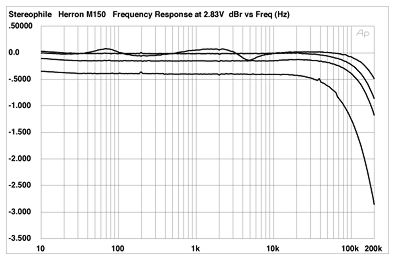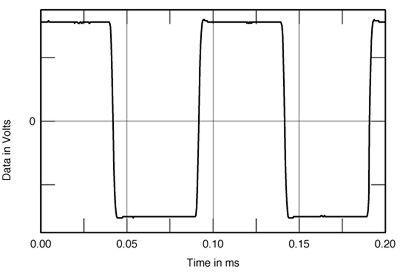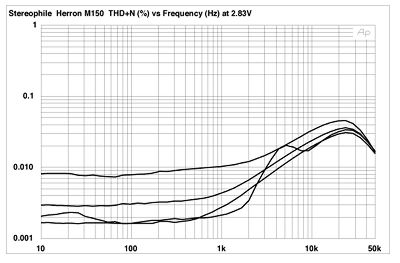| Columns Retired Columns & Blogs |
Herron Audio M150 monoblock power amplifier Measurements
Sidebar 3: Measurements
Before I measure a power amplifier, I precondition it by running it at one-third power for an hour. This maximally stresses a design with a class-B or -AB output stage. After this period, the Herron M150's heatsink was too hot to touch, though the chassis was still cool by comparison. The amplifier's input impedance measured a usefully high 46.4k ohms at 1kHz, and as specified, it didn't invert signal polarity. The M150's voltage gain into 8 ohms was a low 24.3dB—this will be a problem with passive volume controls, as some CD players will be unable to drive the Herron to its full output.
The output impedance was moderate for a solid-state design at 0.15 ohm, which results in some minor modification of the amplifier's frequency response due to interaction between this source impedance and the loudspeaker load. This can be seen in fig.1, which also reveals some dependence of the M150's ultrasonic rolloff point on load impedance. Despite this rolloff, the shape of a small-signal 10kHz squarewave into 8 ohms (fig.2) showed a very slight overshoot.

Fig.1 Herron M150, frequency response at (from top to bottom at 2kHz): 2.83V into dummy loudspeaker load, 1W into 8 ohms, 2W into 4 ohms, and 4W into 2 ohms (0.5dB/vertical div.).

Fig.2 Herron M150, small-signal 10kHz squarewave into 8 ohms.
Fig.3 shows how the M150's low-power THD+noise percentage changes with frequency. The distortion level is superbly low into 8 ohms, but doubles each time the impedance is halved. There is also a rise in THD at higher frequencies, but even in the worst case—into 2 ohms above 10kHz—the level remains below 0.05%.

Fig.3 Herron M150, THD+noise (%) vs frequency at (from top to bottom at 2kHz): 4W into 2 ohms, 2W into 4 ohms, 1W into 8 ohms, and 2.83V into simulated loudspeaker load.
- Log in or register to post comments




































